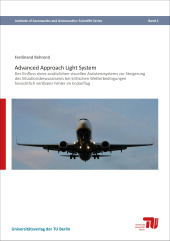Mikromechanische Modellierung von Fasergelege-Kunststoff-Verbunden auf Basis von Normprüfungen unter Berücksichtigung der in-situ-Eigenschaften der Matrix

Publishing year: 2014
Fibre-polymer-matrix-composites show anisotropic behaviour. For the prediction of mechanical properties of fibre-reinforced-plastics structures a model of the mechanical properties of the material is required. Prior to modelling these properties are determined by mechanical testing. Based on the results a modell of the mechanical properties of the material is derived. Due to the anisotropic behaviour at least three different mechanical coupon tests have to be carried out to determine the quasi-static behaviour of a fibre-reinforced material. Throughout the manufacturing of the coupons it is impossible to avoid a scatter in the fibre volume content of the coupons. Thus mechanical properties determined at different fibre volume contents are merged within one mechanical model of the material. Due to the fact that the mechanical properties of fibre-reinforced plastics are highly dependent on their fibre volume content a significant deviation of the model from the real mechanical properties can be the result. Further a remarkable scatter can result from additional deviations such as void content and misalignment of either the fibres and the fabric. Within the scope of this research the inverse laminate theory (ILT) is extended to enable the inverse calculation of the mechanical properties of fibre-reinforced plastics. The resulting method is called Extended Inverse Laminate Theory (EILT). Utilising this method the variance of the fibre volume content of the tested laminates can be taken into account. The cycle of determination of mechanical properties can be transferred to a fully analytical-synthetical process. The only input parameters required can be taken from results of coupon testing based on international testing standards. The resulting generic material model is completely phenomenologically based. An important part of this work is the development of an analytical model to describe the in-situ-properties of the polymer-matrix. All mechanical properties that cannot be measured on the pure polymer-matrix but are resulting from the transverse strain-blocking effect of the matrix induced by the incorporated fibres are called in-situ-properties. Mechanical testing carried out on composites made from non-crimped glass-fibre fabrics with epoxy matrix are the experimental basis of this work. All of the testing has been carried out based on international testing standards. The resulting material model is utilised for dimensioning, simulation and design of rotor blades for wind energy converters. Thus the testing has been carried out based on standards recommended by the guideline used for approval of the rotor blades. The resulting method (EILT) leads to a good correlation between measured and calculated mechanical properties of non-crimped glass-fibre-reinforced polymer composites. Further all input parameters can be taken from mechanical testing results based on established international testing standards. This makes it superior compared to the ILT.



